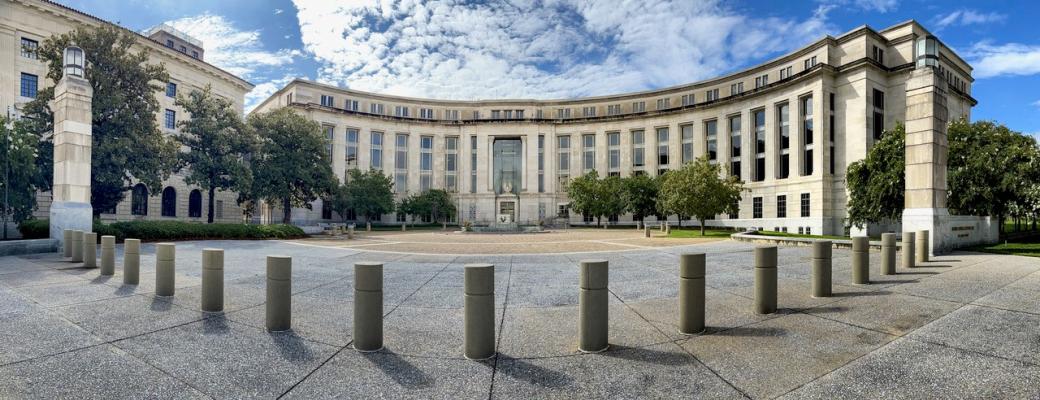The Middle District of Alabama has received calls from several citizens this week reporting calls from bad actors posing as law enforcement. Common elements of the calls appear to be the use of a real name of a US Marshal official... Read more
Former District Judges of the Alabama Middle District
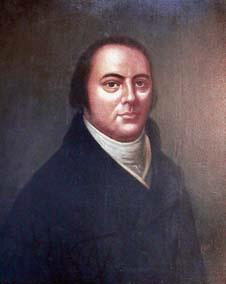
Ephraim Kirby, 1757-1804
Ephraim Kirby was born in Connecticut, the great-great grandson of Joseph Kirby, who emigrated from Warwickshire to Hartford in the early Seventeenth Century. Ephraim Kirby was educated at Yale, but left without a degree. He served in the cavalry during the Revolution and was wounded thirteen times. In 1787, Yale gave Kirby an honorary Master of Arts degree. He practiced law in Litchfield and was in the Connecticut Legislature from 1791 until 1801, afterwards serving as a director of the Western Reserve in Ohio. In 1789 Kirby compiled the first volume of law reports in America, those of the Superior Court of Connecticut.
President Jefferson appointed Kirby as the first Superior Court Judge of the Mississippi Territory in 1804. He went directly to his new post, Fort Stoddert, on the Alabama River north of Spanish-held Mobile, and near the present Mount Vernon. In this sparsely-settled wilderness, he began the foundation of a new court system for what would become the State of Alabama.
Kirby lived only a few months, dying of fever while planning to return to his family. He left a wife and eight children in Connecticut. His grave at old Fort Stoddert has never been found.

Harry Toulmin, 1766-1824
Harry Toulmin was a remarkable figure in American judicial history, a Renaissance man on the frontier. He was born at Taunton, England, and moved to the United States in 1793 and went to Kentucky. He became president of Transylvania University, a friend of James Madison and Thomas Jefferson, and Secretary of State of Kentucky. He studied law and was appointed to the Kentucky bar, writing and publishing several works on the laws of Kentucky.
In 1804, President Jefferson appointed Harry Toulmin to succeed Ephraim Kirby as Judge of the Superior Court of the Mississippi Territory. He settled at Fort Stoddert in 1804, in a district he described as being 340 miles long and 330 miles wide. He was postmaster in his part of the Territory and the diplomat who represented U.S. citizens in their claims against the Spanish of Mobile. He was minister, physician and judge to the territory. He wrote the Mississippi Magistrate’s Guide and The Laws of Mississippi in 1807. In 1817, the Alabama Territory was formed and Toulmin moved to Washington, Alabama, where he helped write the constitution for the new State of Alabama. He wrote his Digest of the Laws of the State of Alabama in 1823. He died in December 1824 at Washington, aged fifty-eight. He was the father of ten children, and his grandson, Harry Theophilus Toulmin, was appointed by President Cleveland as judge of the Southern District of Alabama in 1886.
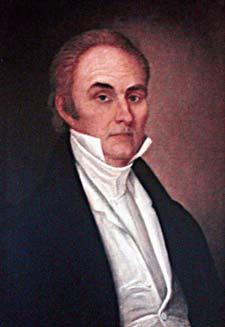
Charles Tait, 1768-1835
Charles Tait was born in Virginia but moved with his parents to Georgia after the Revolution. He was educated at the Wilkes Academy, Washington, Georgia, and at Cokesbury College in Maryland. While at Cokesbury, aged 19, he was thrown from a horse and his leg was so injured that it was amputated. His wooden peg leg is owned today by the Alabama Department of Archives and History. He began to practice law in Elberton, Georgia, in 1798 and was elected judge of the Western Circuit of Georgia in 1803. He became a U.S. Senator in 1809. He was involved in a celebrated “duel” with Judge Dooly of Georgia, in which Dooly refused to participate unless his leg was encased in a hollow tree limb to simulate Tait’s handicap.
Senator Tait was influential in the admission of Alabama to the Union in 1819. He moved to the new state soon after statehood was granted, acquiring lands on the Alabama River in Monroe and Wilcox Counties. In 1820, he was appointed by President Monroe as the first U.S. District Judge of Alabama. He presided over the court during the period that the state capital was at Cahawba. He was considered one of the most learned men of his day, with notable achievements in literature and the sciences. He was a distinguished orator and debater. Tait resigned from the court in 1826 in order to devote his time to planting. He died in Wilcox County in 1835, leaving many descendants.
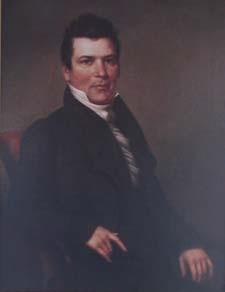
William Crawford, 1784-1849
William Crawford was a Virginian, like his predecessor Charles Tait. He moved to the Territorial Capital of St. Stephens in 1817, where he was Federal District Attorney. In that office, he prosecuted a postmaster named Gilmer, who had stolen money from the mails. Gilmer ambushed and shot Crawford in the side with a musket. Crawford narrowly escaped death. He was elected president of the Tombeckbe Bank of St. Stephens in 1818. Crawford ran for U.S. Senator but was defeated by the powerful William Rufus King. In 1826, he was appointed as the second Federal District Judge.
The pioneer town of St. Stephens waned after the state capital moved to Cahawba in 1819. Crawford moved to Mobile, where he lived the rest of his life. As a trustee of the University of Alabama from 1824 to 1828, he helped lay all the plans for that institution before it actually opened its doors in 1831.
The historian Willis Brewer wrote that “Judge Crawford was neither sociable nor popular, for he was a man of strong antipathies, and austere bearing.” More popular was his elegant wife, Winnifred Fitts, whom he married in St. Stephens in 1820. When the Crawfords were in Philadelphia in 1837, she was painted by Thomas Sully. The portrait is the artist’s masterpiece and the jewel of the collections of the Alabama Department of Archives and History. This work is more widely known today than Crawford’s tenure on the court, which lasted until his death in Mobile in 1849.
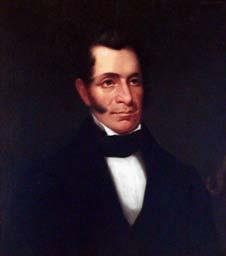
John Gayle, 1792-1859
In John Gayle’s lifetime, he held nearly every distinguished office that the State of Alabama could bestow. Born in South Carolina, he graduated from the College of South Carolina (today the University of South Carolina) in 1813 and immediately moved to Claiborne on the Alabama River, then in the Mississippi Territory. He was a member of the legislative council of the first Territorial Legislature in 1818. He became solicitor of the first judicial circuit in 1819 and was elected to the state legislature in 1822. He was circuit judge in 1823 and served on the Alabama Supreme Court from 1824 until 1828, when he resigned. In 1831, he was elected Governor of Alabama, serving two terms.
The Gayle Administration, during the period when Tuscaloosa served as Alabama’s capital city, was notable for the dramatic events involving Native American removal from the state, and for the building of Alabama’s first railroad. In 1846, Gayle went to Congress where he served one term. He returned to Alabama in 1849 when President Zachary Taylor appointed him to succeed William Crawford as Federal District Judge.
Gayle was immensely popular and was considered a kind public servant and a firm and incorruptible judge. He was married twice and left many descendants. The library of the University of Alabama in named for his daughter, Amelia Gayle Gorgas. Judge Gayle died in Mobile in 1859.
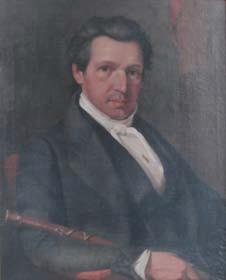
George Washington Lane, 1806-1864
George Washington Lane was born in Georgia and moved to Limestone County, Alabama, with his family, in 1821. He read for the law in the private law school of Judge Daniel Coleman in Athens, Alabama, after which he practiced law in Athens. He became a legislator, then a county court judge, and was circuit judge for twelve years. Afterwards, he opened a law office in Hunstville.
At the time of the Civil War, Lane, like many of his fellows in Limestone and Madison Counties, was deeply opposed to secession. After the death of Judge John Gayle in 1859, the office of District Judge had been held by William Giles Jones, who had resigned from the Federal bench when Alabama seceded in 1861. U.S. President Abraham Lincoln, ignoring the fact that Alabama’s Federal Judicial District was no longer a part of the United States, appointed Lane to succeed Jones.
Lane could not actively serve a court which did not exist. Though a strong Unionist, his son, Captain Robert W. Lane, was killed in the Confederate service in Forrest’s cavalry. The historian Willis Brewer wrote of Judge Lane that, “as a judge he was lenient but sound and reliable, and as a man he was always popular because of his kind and humane nature.” He died in Louisville, Kentucky, in 1864. President Lincoln appointed the New Yorker, Richard Busteed, to succeed him.
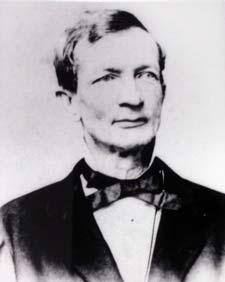
William Giles Jones, 1808-1883
William Giles Jones was born in Virginia, the son of a planter. He was educated at Hampden-Sidney College and the University of Virginia, and studied law with Attorney General John Robertson of Richmond. He was admitted to the bar in 1830 and moved to Alabama in 1834, where he was elected to the Legislature from Greene County in 1843, later practicing law in Mobile.
Jones again served in the Legislature from Mobile in 1849 and in 1859. On the death of Judge John Gayle, third District Judge of Alabama, in 1859, Jones was appointed as Fourth District Judge by President Buchanan. In 1861, Alabama seceded from the Union, and Judge Jones resigned. He was immediately appointed to the equivalent position in the new Confederate States by President Jefferson Davis. U.S. President Lincoln did not acknowledge secession and appointed George Washington Lane as U.S. District Judge. That court could not sit, however. Judge Jones actively presided over sessions of the Confederate District Court in Hunstville, Montgomery, and Mobile. At the close of the Civil War in 1865, he was arrested and indicted for treason against the United States government in the same court over which he had presided. Before Jones could be tried, Congress passed an act to relieve him from further prosecution. He returned to Mobile and practiced law there until his death.
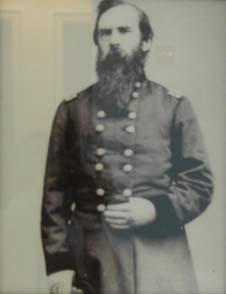
Richard Busteed, 1822-1898
Richard Busteed was born in Ireland, son of a strong emancipationist who moved to Canada. Busteed moved to New York where he was a Methodist preacher and was licensed to practice law in 1846. In 1860, he was lawyer for the aggrieved husband in a notorious divorce case in which the press reported his denunciation of the wife as “the harlot of the nineteenth century.” At the outbreak of the Civil War, he became a Brigadier-General in the Union army.
In 1864, Busteed was appointed by President Lincoln as Federal District Judge of Alabama, to succeed George Washington Lane, who had died in office. The court did not actually sit until federal rule was re-established in 1865, at which time Busteed became one of the most unpopular judicial figures in Alabama history. He was seen as corrupt and, on visits to the North, he was quoted as heaping “the vilest abuse upon the Southern people.” In December 1867, he was shot on the street in Mobile by U.S. District Attorney L.V.B. Martin, who then approached Busteed’s “crumpled form” and fired two more shots into him. Mr. Martin went to Texas and was never prosecuted, while Busteed recovered rapidly. With the weakening of carpetbag rule, impeachment charges were brought against Busteed, charging non-residence, failure to hold court, and improper use of his official position. To avoid being removed from office, he resigned in 1874. He died in New York City in 1898.
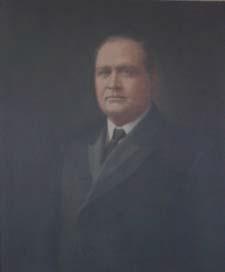
Henry De Lamar Clayton, 1857-1929
Henry De Lamar Clayton was born in Barbour County, Alabama, the son of a noted Major General of the Confederate Army and President of the University of Alabama, for whom he was named. He graduated from the University of Alabama in law in 1878 and began his practice in Eufaula. He served in the Alabama Legislature in 1890-1891 and as United States Attorney for the Middle District of Alabama in the years 1893-1896.
In 1897, Henry Clayton was elected to Congress from Alabama, and he was re-elected seven times, serving from May 1897 to May 1914. At the latter date, he was appointed by President Woodrow Wilson to become Judge of the Middle and Northern Districts of Alabama, succeeding Thomas Goode Jones, who had died in office. Judge Clayton served for fifteen years, until his death in 1929.
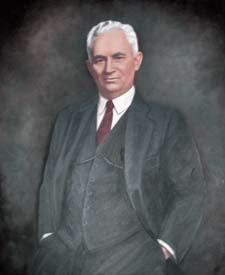
Charles Brent Kennamer, 1874-1955
Charles Brent Kennamer was a native of Marshall County, Alabama. He initially read law, finishing in 1903. At that date, he began to practice law in Guntersville, Alabama, afterwards serving as County Solicitor for Marshall County and as Assistant U.S. Attorney for the Northern District of Alabama from 1907 to 1914. He became Special Assistant U.S. Attorney for the Northern District from 1914 to 1916. After further education at Georgetown University, Washington, he served as U.S. Attorney for the Northern District of Alabama from 1922 to 1931.
Judge Henry De Lamar Clayton died in 1929, and his seat lay vacant until President Herbert Hoover appointed Charles Kennamer to his position in January 1931. Judge Kennamer served until his death in 1955.
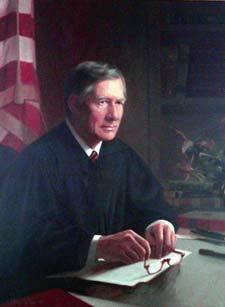
Frank Minis Johnson, Jr, 1918-1999
Judge Frank M. Johnson Jr was one of the Twentieth Century’s significant historical figures. A native of Winston County, Alabama, he graduated in law from the University of Alabama in 1943 and served in World War II. He practiced in Jasper until 1953, when he became U.S. Attorney for Alabama’s Northern District. He was appointed by President Eisenhower to Judge Kennamer’s seat on the U.S. District Court, Middle District, in 1955, where he was Chief Judge from 1966 to 1979. He was considered for a U.S. Supreme Court seat during the Nixon Administration.
In 1977, President Carter nominated Judge Johnson as Director of the FBI. Those plans were foiled by health problems, and Judge Johnson returned to Montgomery, and to a nomination to a seat on the U.S. Court of Appeals for the Fifth Circuit. He served there until 1981, when he was reassigned to the newly created U.S. Court of Appeals for the Eleventh Circuit. He assumed senior status in 1991, but served the court until his death in 1999. Judge Johnson’s decisions in many of the cases of the Civil Rights Era changed history. In 1992, the Montgomery courthouse was named the Frank M. Johnson, Jr. Federal Building and United States Courthouse.
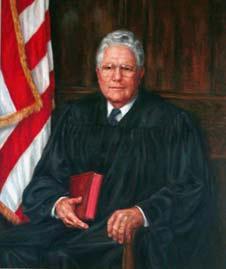
Robert Edward Varner, 1921-2006
Judge Robert Varner is a native of Tuskegee, Alabama, who was educated at Auburn University and received his law degree from the University of Alabama in 1949. He served in World War II as a U.S. Naval Aviator Lieutenant. He practiced law in Tuskegee from 1949 to 1954, after which he was Assistant U.S. Attorney for the Middle District of Alabama from 1954 to 1958. From 1958 to 1971, he was in private practice in Montgomery.
In 1971, President Richard M. Nixon appointed Varner to a new seat on the U.S. District Court, Middle District of Alabama. The nomination was confirmed in April 1971. From 1979 to 1984, Judge Varner was Chief Judge of the Court. Judge Varner assumed senior status in 1986. He retired in 2000 and died at the age of 84 in 2006.
Oral History recorded on April 27, 2000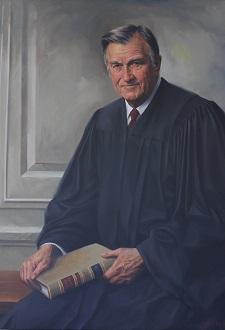
Truman McGill Hobbs, 1921-2015
Judge Truman Hobbs was born on February 8, 1921 in Selma. He graduated from the University of North Carolina in 1942, then saw active service as a U.S. Navy lieutenant in World War II. He left military service in 1946.
Judge Hobbs entered Yale University Law School and graduated in 1948. He then served as a law clerk for U.S. Supreme Court Justice Hugo Black in 1948 and 1949.
From 1949 to 1980, Judge Hobbs was in private practice in Montgomery, Alabama. Recognized as an outstanding trial lawyer, he was elected a Fellow in the American College of Trial Lawyers and the International Academy of Trial Lawyers. From 1952 to 1958, he chaired the Alabama Unemployment Appeal Board, and he served as President of the Alabama Stat Bar in 1971-1972.
In January 1980, Judge Hobbs was appointed by President Carter to a new seat on the U.S. District Court, Middle District of Alabama. He served as Chief Judge from 1984-1991. Judge Hobbs assumed senior status in 1991, and served until his death in 2015.
Oral History recorded on July18, 2000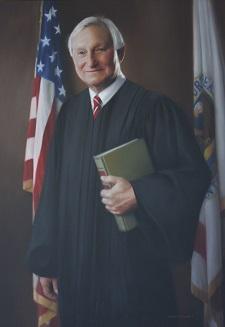
Joel Fredrick Dubina, b. 1947
Judge Dubina was born in 1947, in Elkhart, Indiana. After moving to Montgomery, Alabama, at a very early age and attending local public schools, he graduated from The University of Alabama in 1970. He served in the Alabama Air National Guard, 187th Tactical Reconnaissance Group, where he received an Honorable Discharge in 1975. In 1973, Judge Dubina received his Doctor of Jurisprudence from Cumberland School of Law, Samford University. Thereafter, he served as a law clerk to the Honorable Robert E. Varner, U.S. District Judge for the Middle District of Alabama.
Following his judicial clerkship, Judge Dubina joined the law firm of Jones, Murray, Stewart, and Yarbrough. He practiced law until 1983, when he was appointed a United States Magistrate Judge for the Middle District of Alabama. In 1986, President Ronald Reagan appointed Judge Dubina to the United States District Court for the Middle District of Alabama to fill the vacancy created when Judge Varner took senior status. In 1990, following the tragic death of United States Circuit Judge Robert Vance, President George H.W. Bush appointed Judge Dubina to the United States Court of Appeals for the Eleventh Circuit.
Judge Dubina served as Chief Judge of the Eleventh Circuit from 2009 to 2013. As Chief Judge of the Eleventh Circuit, he served as a member of the Judicial Conference of the United States. In 2010, Chief Justice John G. Roberts appointed Judge Dubina to the Executive Committee of the Judicial Conference. Judge Dubina served on both the Executive Committee of the Judicial Conference and the Judicial Conference until he stepped down as Chief Judge in 2013. Judge Dubina assumed senior status in October 2013.
Oral History, recorded May 6, 2002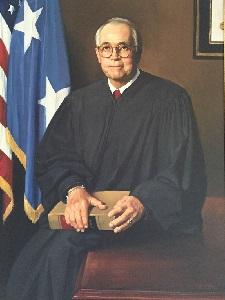
Ira DeMent, 1931-2011
Judge DeMent was born in Birmingham, Alabama in 1931. He was educated at Marion Military Institute, Class of 1951; The University of Alabama, class of 1953; and The University of Alabama School of Law, Class of 1958.
From 1958 to 1959, Judge DeMent was law clerk to Justice Pelham H. Merrill of the Supreme Court of Alabama. In 1959, he became an Assistant Alabama Attorney General. He served as Assistant U.S. Attorney for the Middle District of Alabama from 1959 to 1961.
From 1961 to 1969, Judge DeMent was in private practice in Montgomery, after which he served as U.S. Attorney for the Middle District of Alabama until 1977. He was in private practice in Montgomery from 1977 to 1992. During this time, he served as Special Counsel to three Alabama governors. He was Chief Judge of the Wake Island Court of Appeals from 1985 to 2002.
Judge DeMent served in the U.S. Army Reserve from 1953 to 1974, attaining the rank of Lieutenant Colonel. He later served in the U.S. Air Force Reserve, Judge Advocate General's Corps, from 1982 to 1986, attaining the rank of Major General.
In 1992, President George H.W. Bush appointed Ira DeMent to the seat on the U.S. District Court, Middle District of Alabama, which had been vacated by Judge Truman M. Hobbs upon his assumption of senior status. Judge DeMent assumed senior status in April 2002, and served until his death in July 2011.
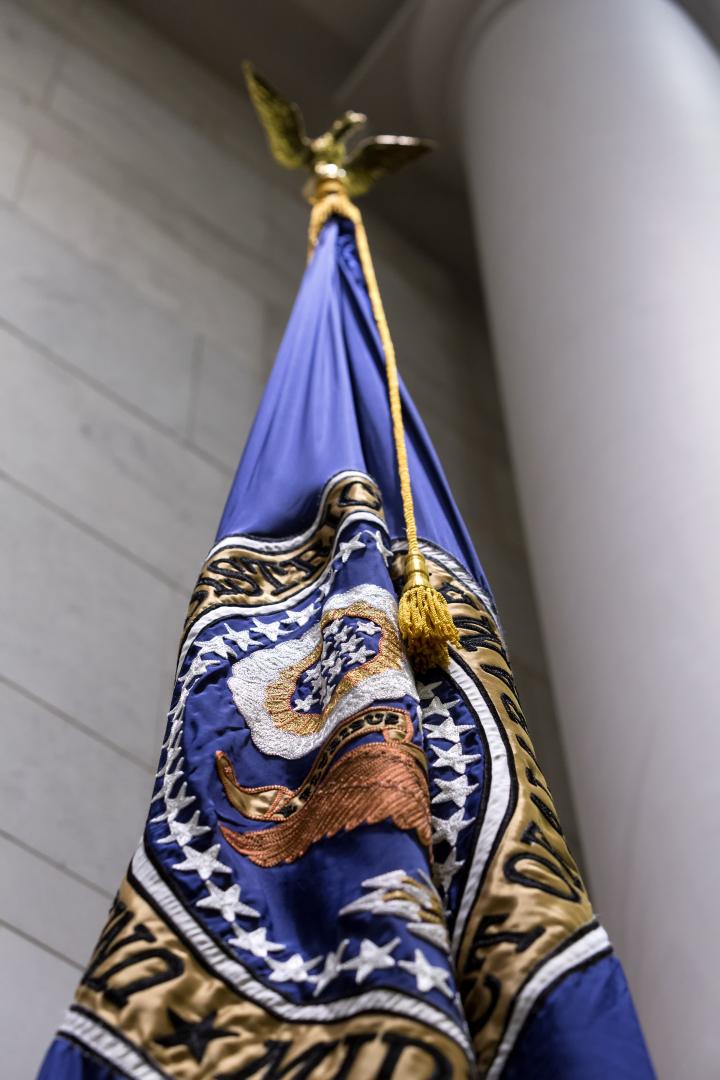
Mark Everett Fuller, b. 1958
Judge Fuller was born in 1958 in Enterprise, Alabama. He received a Bachelor of Science degree from The University of Alabama in 1982, and a Juris Doctorate from The University of Alabama School of Law in 1985.
Judge Fuller was an attorney in private practice from 1985 to 1996, when he became Chief Assistant District Attorney for the Twelfth Judicial Circuit of Alabama. In 1996 he was elected District Attorney of the Twelfth Judicial Circuit, where he served until his appointment as a federal judge.
In August 2002, Judge Fuller was nominated by President George W. Bush and confirmed by the U.S. Senate in November 2002, to the District Court for the Middle District of Alabama. Judge Fuller resigned his judicial commission in August 2015.
